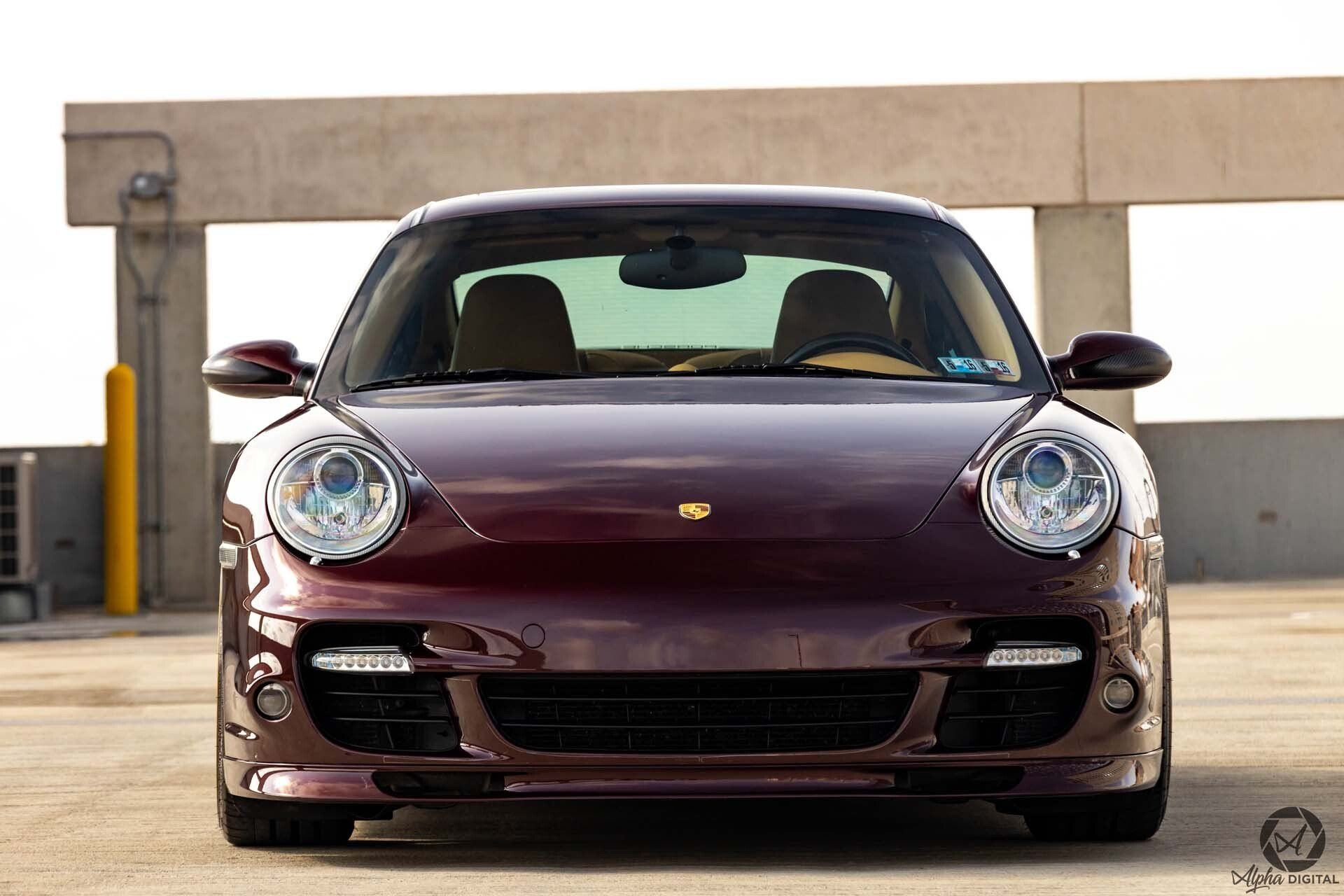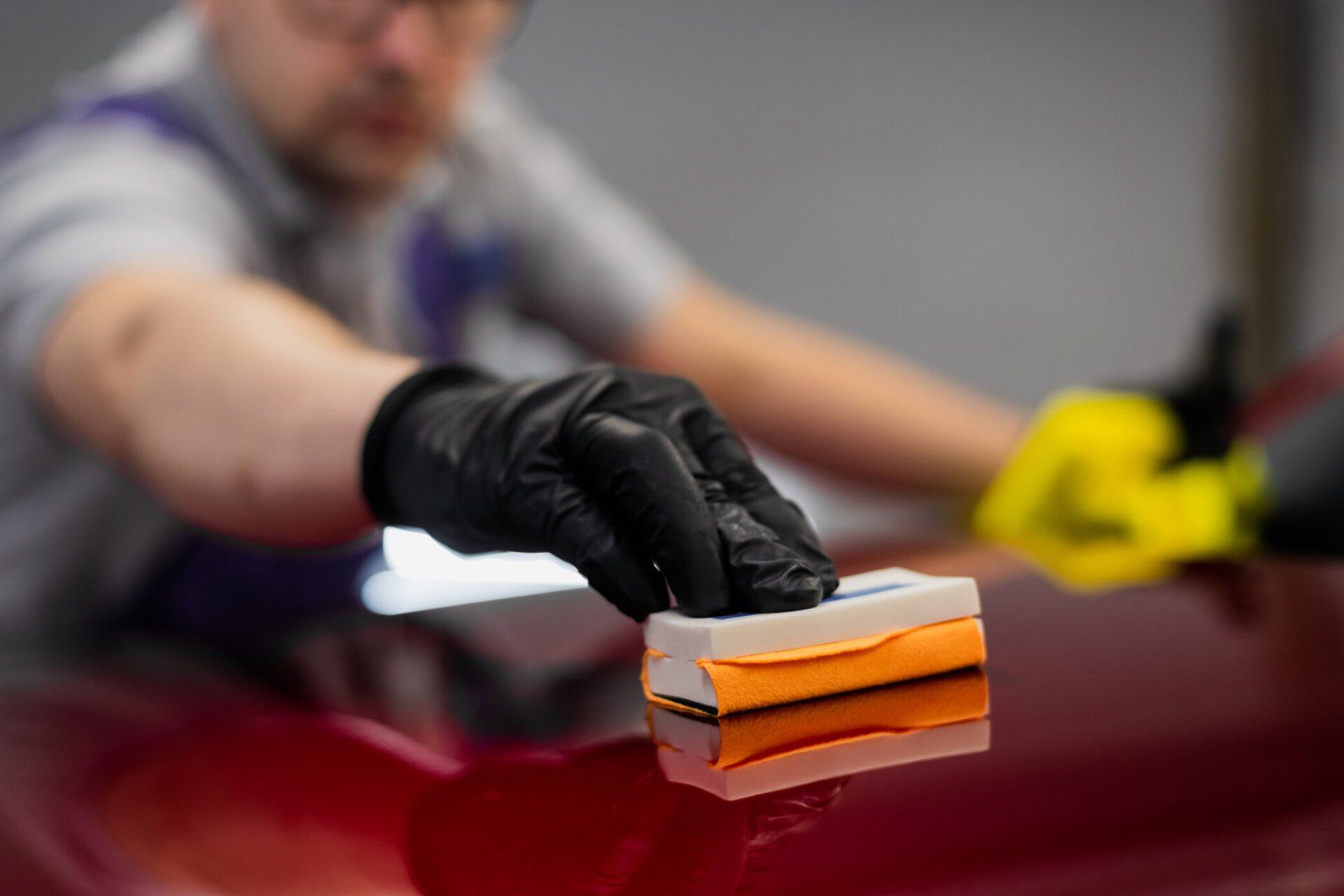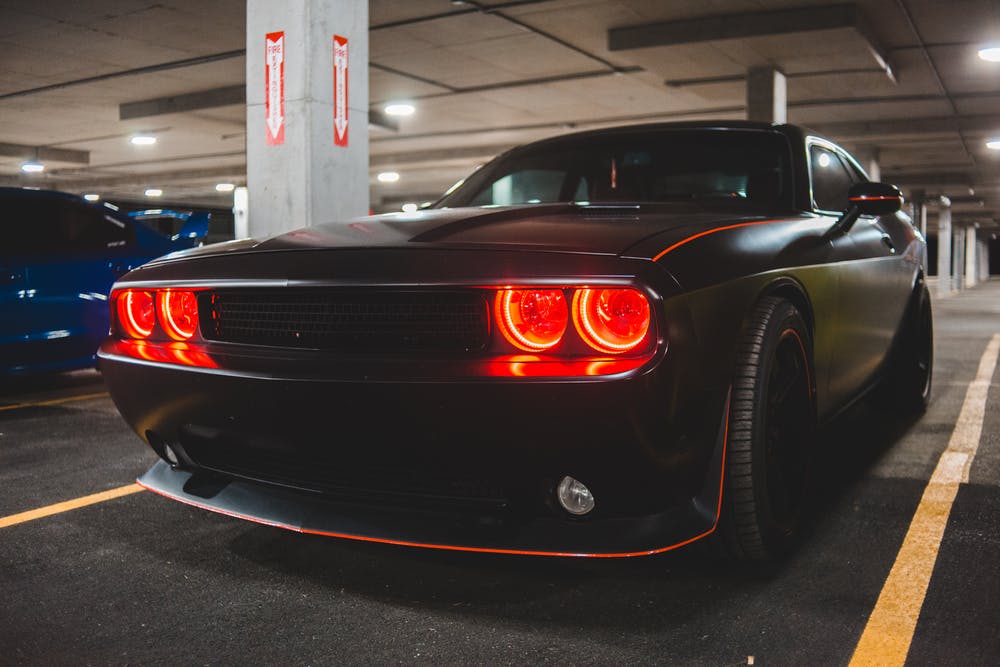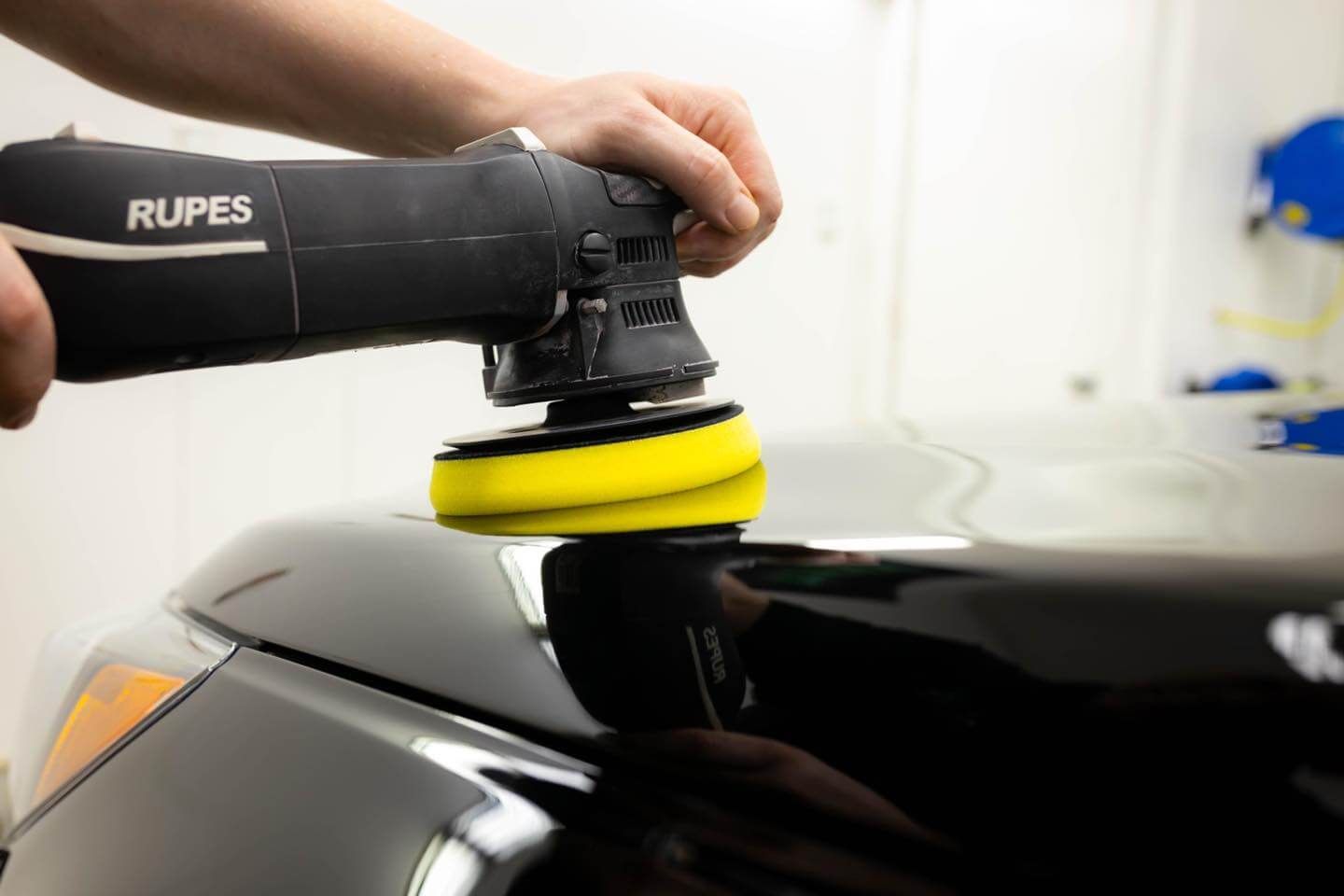8 Common Misconceptions About Ceramic Coating Debunked
Catch your breath because the misinformation whirlwind about ceramic coating is about to be dispelled. Imagine a flawless gown that repels every speck of dust and droplet of water - that's exactly how ceramic coating works for your vehicle. However, many people have become skeptical of its significance due to a web of misconceptions.
Buckle up as we debunk eight common myths about ceramic coating that have hovered over Minnesota like an unshakeable storm cloud!
Decoding Ceramic Coating
Have you ever heard of the term “ceramic coating” but have no idea what it means or how it works? Don't worry; we are here to help you decipher the ceramic coating. In a nutshell,
ceramic coating is a liquid polymer that forms a strong bond with your vehicle's paintwork and adds an extra layer of protection against various environmental and chemical elements.
At first glance, it may seem like ceramic coating is just another car detailing product on the market. This technology, however, has more to it than meets the eye. Ceramic coatings have unique properties that can help transform your car's appearance and make it look brand new. Think about when you purchase a brand new car; it usually looks immaculate with a shiny coat of paint.
Now think about the same car after a year or two of use. Your tires gather dirt, your engine builds up oil stains, and your paintwork slowly fades away due to the constant exposure to harmful environmental factors such as UV radiation and acid rain. By applying a ceramic coating to your car’s exterior, you're creating an invisible shield that protects your paintwork from harmful contaminants that cause wear and tear on the surface over time.
But wait, don't waxes and sealants do the same thing? Not exactly. Waxes and sealants provide temporary protection that lasts only for a few weeks or months, while ceramic coatings provide long-term protection that can last for years without losing their protective properties.
To understand the benefits of
ceramic coatings further, let's take a deeper dive into what they really are.
- According to a report by the National Institute for Automotive Service Excellence, despite being a high-performing form of car paint protection, only about 30% of vehicle owners in Rochester apply ceramic coatings on a regular basis.
What Ceramic Coating Really Is
Ceramic coatings are made up of nanotechnology and form a layer of protection on your vehicle’s paint surface. This technology enables ceramic coatings to bond with the paint molecules effectively, which provides additional hardness and durability to the painted surface.
The coating creates an ultra-thin layer of protection that is hydrophobic and repels water and other contaminants.
Remember the last time you had to wash your car after a rain shower? Perhaps you noticed how difficult it was to remove water droplets and how quickly these droplets turned into watermarks, even after drying.
With ceramic coating, this headache is no more, as the water droplets slide off smoothly without leaving any marks or stains behind.
Another significant advantage of ceramic coatings is the level of ultraviolet protection they provide to your vehicle’s exterior. UV radiation can gradually fade your car’s color over time, causing it to lose its appeal and value.
A ceramic coating can keep your car looking new for years as it provides protection against UV rays and thus reduces the effects of color fading.
Think of the ceramic coating as a suit of armor for your car. Just like full-body armor shields medieval soldiers against swords and arrows during battle, ceramic coating creates a tough barrier between your car’s delicate paintwork and harsh environmental influences such as dirt, grime, bird droppings, acid rain, pollen, tree sap, etc.
But some argue that
ceramic coatings are too expensive compared to traditional wax or sealant options for protecting a vehicle's exterior.
However, when considering the long-term cost savings benefits of fewer trips to the body shop for repairs or repainting due to fading surfaces, the upfront cost of a ceramic coating is justified.
Now that we've established what ceramic coating really is, let’s look at how it protects your vehicles against various elements.
How Ceramic Coating Protects Vehicles
Ceramic coating is a liquid polymer that provides an additional layer of protection for your vehicle's paint. Unlike traditional waxes or sealants, ceramic coatings bond chemically with the car's paint, creating a protective layer that lasts for many years.
But how does this process work, exactly?
Think of the ceramic coating as a shield. It creates an invisible barrier between the outside world and your car's paint, which helps to protect it from bird droppings and environmental contaminants that can cause damage over time. Traditional waxes and sealants don't provide as much protection because they are made of natural materials that break down over time.
In addition to offering superior defense against harmful substances, ceramic coatings can also help preserve your vehicle's color and shine. Preparation before application is key to achieving optimal results.
Proper washing, decontamination, and polishing will remove any contaminants such as tar, tree sap, and fallout from atmospheric pollution that would otherwise hinder the bonding of the ceramic coating onto the surface of your vehicle’s paintwork.
Having looked at how ceramic coating protects vehicles in detail, let's look at some common myths about ceramic coating that need debunking.
Unraveling Myths About Ceramic Coating
Myth #1: Waxes and Sealants Outperform Ceramic Coatings: This is one of the most common misconceptions about ceramic coatings. While wax or sealant might be cheaper initially, they will not last as long or offer near as much protection as a professional-grade ceramic coating.
When compared side by side with traditional waxes and sealants, ceramic coatings come out on top every time. Ceramic coatings provide greater protection from environmental contaminants, including acid rain, bird droppings, and UV rays that can cause oxidation and damage over time.
Myth #2: Ceramic Coating Durability Misconceptions: Ceramic coatings are often touted as being indestructible, but this is far from the truth. They do offer superior protection against everyday wear-and-tear but they are not impervious to damage.
However, proper maintenance can significantly increase the lifespan of your ceramic coating. Regular washing using PH-neutral soaps specific for ceramic coatings will ensure that the coating lasts for many years, providing reliable protection for your vehicle.
Myth #3: Unveiling the Truth About Ceramic Coating Costs: It's true that professional ceramic coatings can be more expensive than traditional waxes and sealants. However, the long-term cost-effectiveness of a ceramic coating should not be overlooked.
A high-quality ceramic coating can last up to five years or more, which is more than one wax or sealant combined, making it much more cost-effective in the long run. Additionally, improper maintenance of traditional wax or sealant products could lead to further costs due to irreversible damage caused to your vehicle's paintwork, which requires costly repairs.
Now that we have debunked some of the most common myths about ceramic coating, let us recap what we have learned today.

Myth #1: Waxes and Sealants Outperform Ceramic Coatings
When it comes to vehicle protection, many people believe that waxes and sealants outperform ceramic coatings. However, this couldn't be further from the truth. While waxes and sealants undoubtedly have benefits of their own, they are insignificant in comparison to the protection that ceramic coatings provide.
Let us look at an analogy to see why ceramic coatings are superior to waxes and sealants: Assume you are training for a marathon. If you want to protect your feet from blisters, you have two options: regular socks or high-quality running socks that are designed specifically for endurance running.
Regular socks may offer some protection, but they simply cannot compete with specialized socks designed for the specific task at hand. The same is true for ceramic coatings versus waxes and sealants.
Ceramic coatings form a bond with the surface they are applied to, creating a protective layer that is much harder and more durable than traditional wax or sealant protections. This bond strengthens the clear coat of your car's paint, thus preventing acid rain damage, bird droppings, tree sap, UV radiation, and chemical stains from sticking to its surface.
The result is a vehicle with a long-lasting shine and superior protection against environmental damage. On the other hand, both waxes and sealants can also add an extra layer of protection to your car's paint.
However, unlike ceramic coatings, which last years before requiring re-application under normal driving conditions (as opposed to the proximity of saltwater bodies), waxes will start breaking down in weeks or months right after application, and their synthetic compounds won’t hold up as strongly against environmental pollutants since they're just laying on top of the paintwork rather than bonding with it permanently like ceramic coatings.
Unlike wax, ceramic coatings are highly water-resistant, so you won’t have to worry about them washing away after rain or having to reapply them again as long as the coating is looked after. Now that we've dispelled the myth that waxes and sealants are superior to ceramic coatings, let's move on to the next common misconception regarding ceramic coating durability.
Myth #2: Ceramic Coating Durability Misconceptions
Another common myth surrounding ceramic coatings is that they are completely scratch-proof and invincible against any type of damage, but this isn't entirely accurate. While ceramic coatings provide excellent protection and can make car surfaces more scratch-resistant, they are not 100% scratch-proof.
Proper wash techniques should always be used in order to avoid swirl marks and marring on the paint surface, and applying some coats of ceramic coating would reduce the number of scratches.
However, moderate to severe damage can still occur, which is why you should not assume that your car is invincible after it has been coated with a ceramic coating. But nothing will offer more defense than a top-notch paint protection film.
But that is another story.
The main benefit of a ceramic coating system, such as the one our detailers at
Five Star Auto Detailing offer, over conventional wax and sealant treatments is its longevity. As discussed earlier, these products don’t just sit on top of your car’s surface; they actually bond with it to form an additional layer of protection for a much longer period of time.
In fact, professionally applied ceramic coatings can last up to five years or even more, depending on driving habits as well as car maintenance routines.
Think about it this way: would you opt for a piece of clothing that can be thrown away easily after one use, or would you prefer a piece of clothing that is made of high-quality materials and can be worn and enjoyed for years?
The same principle applies to ceramic coatings versus traditional waxes and sealants. While the latter may be cheaper, they simply don't have the longevity and protection offered by ceramic coatings.
It's also important to keep in mind that environmental factors can impact the durability of your ceramic coating. For example, cars that are exposed to harsh sunlight or salt water may see a shorter lifespan from their ceramic coating than those driving in normal climate areas.
We strongly recommend regular maintenance and cleaning schedules to extend its life span.
Now that we have debunked some misconceptions about ceramic coatings, we hope it’s easier to consider them as a viable solution for vehicle protection. Let's dive deeper into the topic and learn more about how ceramic coatings protect vehicles in general.
Myth #3: Unveiling the Truth About Ceramic Coating Costs
Another one of the most common misconceptions about ceramic coating is that it is expensive and only luxury car owners can afford it. This claim is not accurate, though. Despite the fact that ceramic coating does require an initial investment, it is important to consider the overall cost-effectiveness over the long term.
The traditional waxing and sealing methods are certainly less expensive than ceramic coating, but they're not as durable. It may seem like a bargain initially since you will spend less money on waxes and sealants; however, you will have to repeat these processes more often to achieve similar effects.
After a few months, the effect wears off, and you have to reapply again.
In contrast, ceramic coatings last much longer—up to five years or more when done properly. With that in mind, instead of spending several hundred dollars every few months on waxing and sealing products, which add up over time, investing once in ceramic coating could be more affordable in the long run.
Moreover, another benefit of ceramic coating is that it helps protect your car's paint job over time. This means your car looks better for longer, retaining its value should you ever want to resell it down the line.
So, while the initial cost may be high compared to other methods, considering all aspects (durability, cost per usage in the long run) makes acquiring a ceramic coat the best choice for those who really love their cars.
To put it into perspective with an analogy: spending money on multiple wax jobs for a car evokes the feeling known as “retail therapy,” where you get a small purchase that makes you feel good at first but has little long-term worth compared to subsequent purchases.
On the flip side, investing in a ceramic coat is like saving for retirement- an investment that increases in value over time and results in lasting rewards.
However, it's important to note that not all ceramic coatings are the same. It’s tempting to go with lower-priced options in all walks of life, but this is one area where you don't want to cut corners. The same is true when seeking a reliable service provider to carry out the ceramic coating process on your car.
While some may feel expensive due to their prices, it's better to opt for a company that possesses the knowledge and experience to do the job right rather than choosing someone inexperienced simply because they're less expensive.
In conclusion, while ceramic coating may appear to be more expensive than waxing or sealing at first, it proves to be more cost-effective in the long run.
By investing in greater exterior protection, such as a ceramic coating, you can boost the resale value of your vehicle while saving money by not having to reapply every few months. You'll eventually thank yourself for making such a wise investment that extends the life of both your car and its paintwork.
Revamp Your Ride's Look With Our Quality Top-Notch Ceramic Coating Services in Rochester, Minnesota!
Looking to breathe new life into your beloved vehicle? Look no further than Five Star Automotive Detailing! Your car will look amazing thanks to our top-notch ceramic coating services in Rochester, Minnesota. Our experts use cutting-edge techniques and materials to provide unrivaled protection and shine.
With our meticulous attention to detail, your vehicle will be protected from the elements while exuding an unmistakable luster. Trust us to enhance your car's aesthetics and safeguard its long-term value. Visit us online to browse for more interesting insights and trends from the automotive detailing industry. You can also give us a call to book an appointment!






